Extensor carpi radialis brevis muscle
Table of Contents
Description
Extensor carpi radialis brevis is a fusiform muscle located in the outer part of the posterior. Anconeus, brachioradialis, extensor carpi radialis longus, extensor digitorum, extensor digiti minimi, and extensor carpi ulnaris all these are combined with ECRB and, it belongs to the superficial forearm extensor group.
Crossing the elbow and wrist joints from their posterior compartment, these muscles generate extension at one or both of these joints. The particular movement of ECRB is to extend and abduct the hand at the wrist joint.
Origin and insertion of Extensor carpi radialis brevis muscle
ECRB aries from the lateral epicondyle of the humerus through the common extensor tendon. This is a general origin that it shares with the extensor digitorum, extensor digiti minimi, and extensor carpi ulnaris muscles.
After this, the muscle course goes inferiorly, and a long tendon in the middle of the forearm goes towards the upper part of the hand. After this, the tendon reaches the posterior surface of the radius through the groove, and then deep to the extensor retinaculum.
Relations
- Extensor carpi radialis brevis is situated in the radial part of the forearm, sitting deep to the extensor carpi radialis longus.
- As its name recommends, the extensor carpi radialis brevis is the shortest of these 2 muscles.
- Its tendon courses deep to the abductor pollicis and extensor pollicis brevis prior to passing under the extensor retinaculum on the upper part of the hand.
- At the retinaculum surface, the tendon is attached medially to that of the extensor carpi radialis longus muscle.
Innervation
Extensor carpi radialis brevis is innervated directly by the radial nerve (C5- C8) or maybe from its deep branch/posterior interosseous nerve. The radial nerve appears from the posterior part of the brachial plexus.
Blood supply
The ECRB muscle is supplied by the radial recurrent artery, radial artery, and deep brachial artery (through its radial collateral branch).
Function of Extensor carpi radialis brevis muscle
- Extensor carpi radialis brevis works with the extensor carpi ulnaris and extensor carpi radialis longus to strengthen the hand.
- This movement is crucial in a pattern of muscle contractions needed for clenching a fist or making a grip.
- While performing these actions wrist extensions restrict the flexor muscles from on acting upon the hand.
- While flexors work only on the digit, that’s why flexing them and producing an efficient hand grip.
- When the extensor carpi radialis brevis muscle contracts combined with the extensor carpi radialis longus and flexor carpi radialis, it is put up to generate hand abduction (radial deviation).
Muscles
- The extensor carpi radialis brevis is one of 7 superficial extensor muscles of the posterior forearm, along with the brachioradialis, extensor carpi radialis longus, extensor digitorum, extensor digiti minimi, extensor carpi ulnaris, and anconeus.
- Majority of these muscle group’s tendinous origin at the lateral epicondyle such as extensor carpi radialis brevis, extensor carpi ulnaris, extensor digiti minimi, and extensor digitorum.
Assessment
Active movements
- Elbow flexion/extension
- Supination/pronation
- Wrist flexion/extension
- Radial/ulnar deviation
Passive movements
- Elbow flexion/extension
- Supination/pronation
- Wrist flexion/pronation
- Radial/ulnar deviation
Resisted movements
- Wrist extension
- Wrist abduction (radial deviation)
- Wrist extension together with abduction
- Grip test
Palpation
- Lateral epicondyle
- With resisted wrist extension and abduction both extensors carpi radialis longus and brevis can be examined at the upper lateral aspect of the posterior portion of the forearm.
- The tendons, particularly the longus, may be palpated on the floor of the anatomical snuff box if the same motion of extension and abduction is carried out.
Physiologic Variants
- There are some noted physiologic variants of the extensor carpi radialis brevis.
- The ECRB muscle to comes from the fascia of the extensor digitorum communis rather than its general origin on the lateral epicondyle.
- Although, the muscle retained its real insertion level on the third metacarpal base.
- Some other variants are unifying the extensor carpi radialis brevis and extensor carpi radialis longus muscles.
- After this, the research suggests that the extensor carpi radialis longus separate from its attachment on the supracondylar ridge of the humerus into a lateral, intermedial, and medial head.
- The lateral and intermedial heads are linked onto their insertion place on the second metacarpal base, but the medial head is attached to the extensor carpi radialis brevis muscle.
- The extensor carpi radialis longus and brevis also sometimes have bifid tendons, which may connect with each other and insert into the bases of the metacarpal bones.
- These physiological variants of insertions, origins, and structure are necessary due to the abnormal findings may underlie particular pathologies such as lateral epicondylitis (tennis elbow).
- Awareness of these anatomic variants by people is also necessary at the time of the planning and treatment of a patient for different conditions that affect the forearm so that they can adjust their methods to the altered variants.
Surgical Considerations
- Surgical considerations incorporate the extensor carpi radialis brevis muscle, which is crucial for the management of lateral epicondylitis or enthesopathy of the extensor carpi radialis brevis.
- Also known as tennis elbow, this condition is often the outcome of repetitive use of the elbow, causing inflammation of tendons that insert onto the lateral epicondyle.
- The most usually include tendon is the extensor carpi radialis brevis, and the condition is typically treated non-surgically with rest, NSAIDs like aspirin or ibuprofen, steroid injections, physical therapy, and/or a brace.
- However, surgery is often considered if the pain is more than six to twelve months.
- In some cases, the fracture of the distal humerus may involve the extensor carpi radialis brevis (and other forearm extensor muscles) because of its attachment to the lateral epicondyle.
- Therefore, in patients coming up with distal humerus fractures including the lateral epicondyle, these muscles must be assessed to make sure there was no ischemia due to interruption of its blood supply and/or nerve damage.
- Research also revealed that in patients with carpal bossing, there could be a physiologic differential in the insertion site of the extensor carpi radialis brevis muscle.
- This dominant frequent outcome in tenosynovitis of the tendon of the extensor carpi radialis brevis as well.
- Nonconservative treatment of individuals suffering from carpal bossing would have an assessment for variant insertion place of the extensor carpi radialis brevis tendon.
Clinical Significance
Pain in the extensor carpi radialis brevis muscle can be caused by a variety of factors, such as overuse, repetitive strain injuries, or trauma. Common symptoms of extensor carpi radialis brevis muscle pain include pain on the outside of the elbow that may radiate down the forearm, weakness in the wrist and hand, and difficulty gripping or lifting objects.
Treatment for extensor carpi radialis brevis muscle pain may include rest, ice, compression, elevation, and gentle stretching exercises. It’s important to consult with a healthcare professional if your pain persists or worsens despite these measures, as they can help determine the underlying cause of your pain and recommend the appropriate treatment.
- In people who have lateral epicondylitis, the extensor carpi radialis brevis muscle is the most usually affected.
- Therefore, in a person who presents with improved pain or burning on the lateral aspect of the elbow and/or a weak grip strength that worsens with motion, lateral epicondylitis with extensor carpi radialis brevis involvement would be considered.
- Wrist drop is a condition that outcome from palsy of the radial nerve.
- In cases of compression of this nerve, the extensor muscles of the wrist and digits are most usually injured., which causes the hand to ‘drop’ or hang in a position of flexion because of the unopposed actions of the extensor muscles.
- If the injury incorporates the radial nerve proximal to its branched into the deep and superficial branches along the lateral border of the cubital fossa, these people can experience some sensory deficits.
Extensor carpi radialis brevis exercises
Strengthening:
Eccentric wrist extension
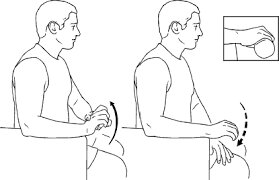
- Rest the arm on a table with the hand hanging over the edge of the table with the palm facing down.
- Hold a small dumbbell and lift the hand up using the opposite hand.
- Then controlling the movement, permit the weight to lower the hand downwards.
- At the end of the movement, repeat by lifting the hand up again and repeat the downwards controlled motion.
Reverse wrist curls with dumbbells

- Begin with sitting on a flat bench, and leaning forward.
- Grab a weight with an overhand grip (in the essence of palms down) and rest the forearms on either the bench or the knees.
- Using the wrists alone (in the essence of wrist motion alone), curl the weight upward, exhaling throughout the motion.
- Gently lower the weight as low as is comfortable, inhaling throughout the motion.
- Repeat this motion 5-6 times as many repetitions as desired.
Stretching:

- Wrist extension stretch
- Hold the stretch of the arm and hand out in front of you, face the fingers to the floor, and pull them backward, towards you.
FAQ
Extensor Carpi Radialis Longus and Brevis: A pair of muscles located on the side of the hand, that permit them to resist extension and abduction of the wrist.
The flexor digitorum profundus (FDP) is an important hand muscle that flexes the metacarpophalangeal and distal interphalangeal joints of the index, middle, ring, and little fingers.
The flexor digitorum profundus (FDP) is an extrinsic wrist joint muscle that flexes the metacarpophalangeal and distal interphalangeal joints of the index, middle, ring, and little fingers.
Crossing the elbow and wrist joints from their posterior surface, these muscles produce extension at one or both of these joints. The particular movement of the extensor carpi radialis brevis is to extend and abduct the hand at the wrist joint.
The median nerve helps a person to move the forearm, wrist, hand, and fingers. It also gives sensation to the forearm and a few parts of the hand. (the forearm is the lower part of the arm that extends from the elbow to the hand.) Pressure on the median nerve causes carpal tunnel syndrome.


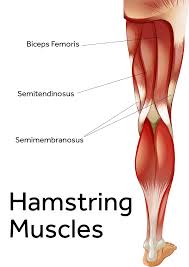
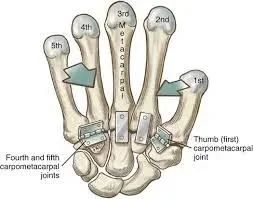
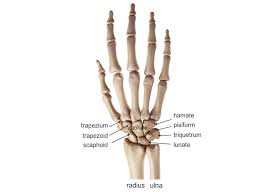
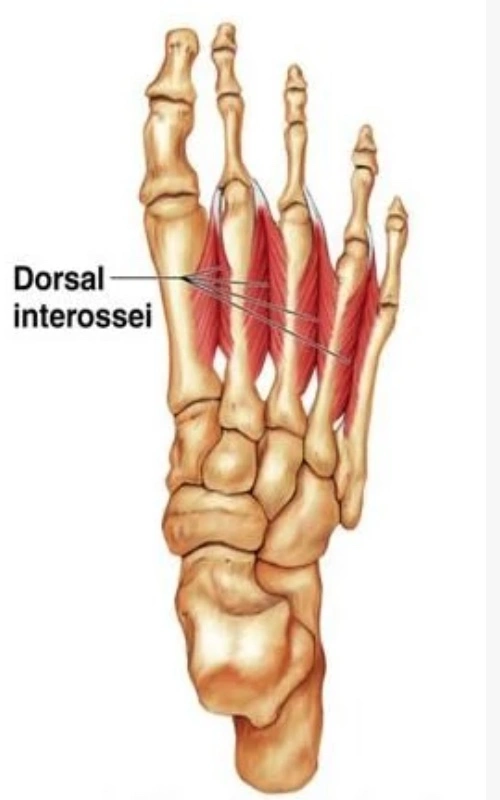
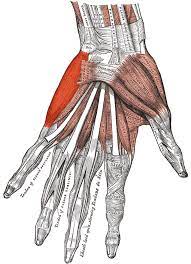
2 Comments